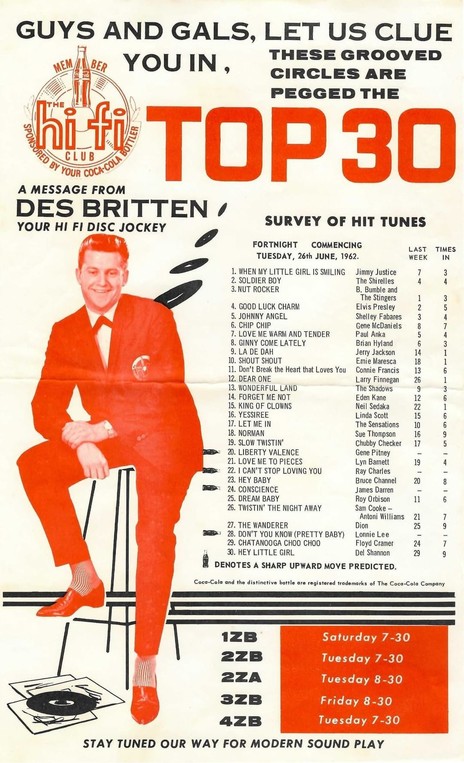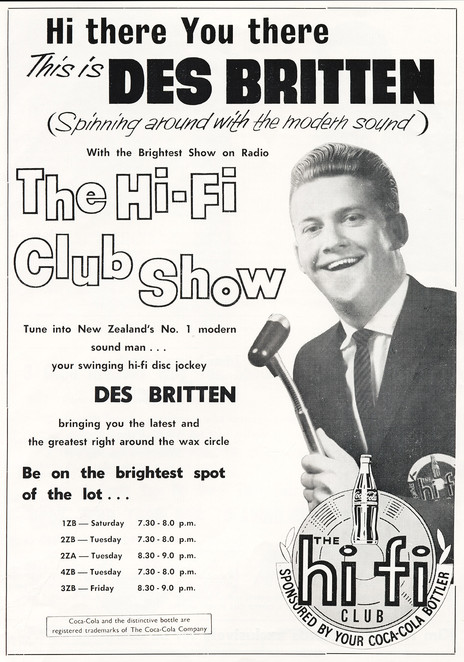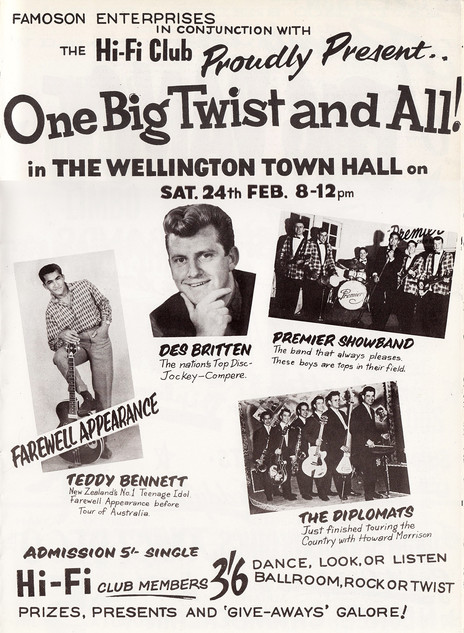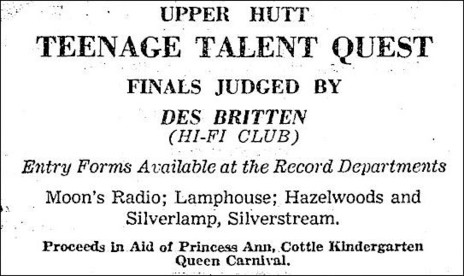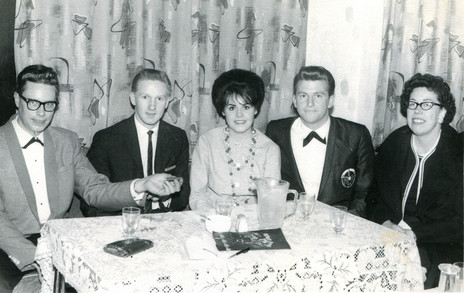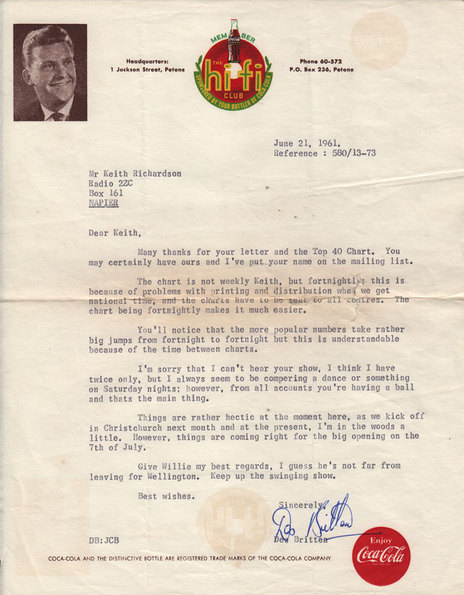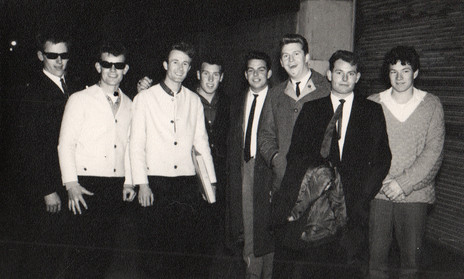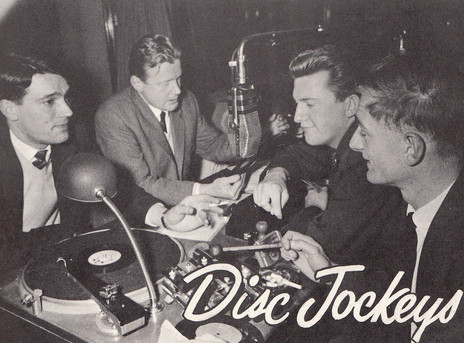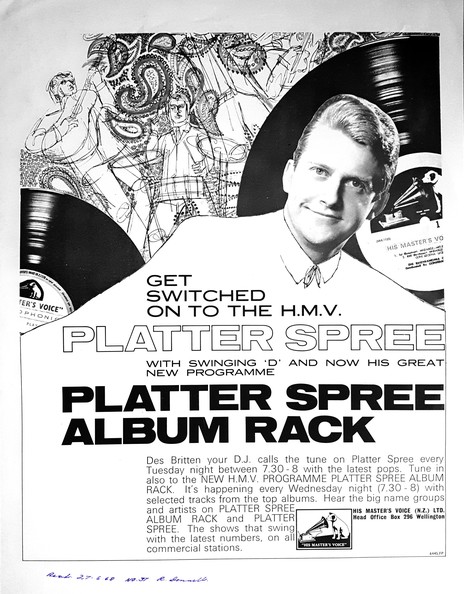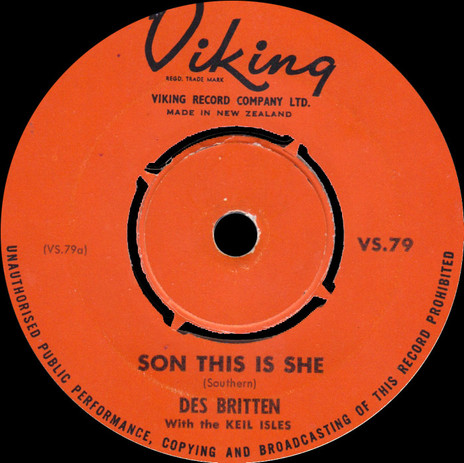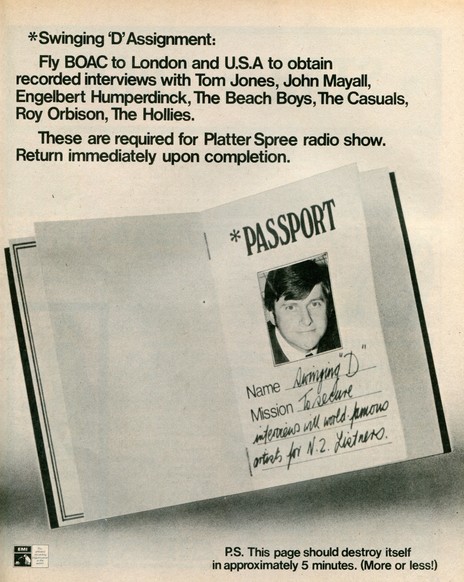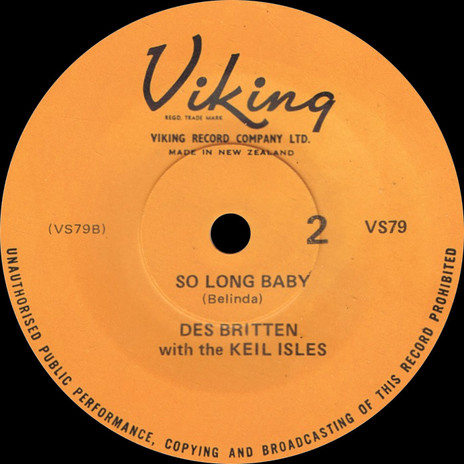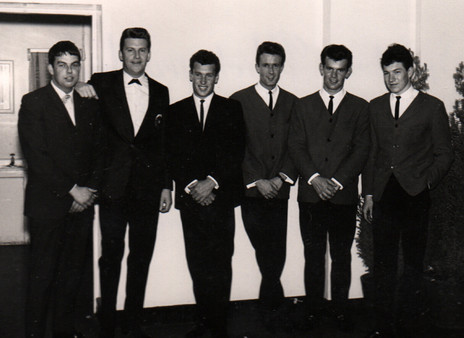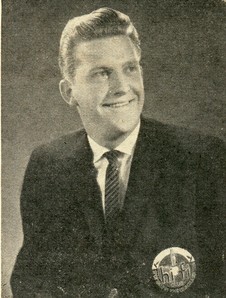In Voices in the Air, a history of New Zealand radio, Peter Downes wrote that “Established rules were cast aside and ‘personality projection’ took over. Rapid-fire Austral-American accents frenziedly scattered the latest ‘hip talk’ jargon in between and over the top of the supercharged but infectious beat of the records. Cautious managers tended to regard the breed with suspicion and there is no doubt that some of the deejays abused their new-found freedoms. Older listeners considered them incomprehensible, young people thought they were the saviour of radio.”
Chamberlain and Britten were the “terrible twins” of the Hawke’s Bay airwaves, joked Bas Tubert, a Wellington radio host 15 years older. The duo would soon make a nationwide impact on radio, with fast-moving shows, slick patter and wacky sound effects and humour. Tubert recalled that Chamberlain “had things humming along, in many ways achieving more than we were in Wellington, where we were overshadowed by head office and couldn’t move without someone breathing down our necks. Neville didn’t have that problem then and had more freedom to branch out, running programmes completely different from anything ever heard in New Zealand before.”
Listening to Chamberlain was a young man in Otane, south of Hastings. Des Britten recorded Chamberlain’s programmes, studied his style, practiced at home, and soon followed in his footsteps. He joined the NZBS as an announcer and, like Chamberlain, was required to front all kinds of programmes in a self-effacing, personality-free style: breakfast, the news, the shopping hour.
In 1960 a trip to Australia gave Britten fresh ideas about broadcasting. Late that year, aged 21, he again followed Chamberlain to become a DJ in Wellington, with his own 2ZB show broadcasting weekly nationwide.
‘The Hi-Fi Club’ quickly had 10,000 signed-up members.
The Hi-Fi Club quickly had 10,000 signed-up members, drawn by the audio gimmicks and especially by the catchphrases which Britten rattled off in a fast-moving half-hour: “Hi there you there, this is the daddyo of your radio, spinning around with the modern sound … Stacks of wax and plenty of platter chatter. Let’s swing every little thing on the centre aisle of your radio dial …” (All this was happening simultaneously with Wolfman Jack’s hipster broadcasts in the US; he was the same age as Britten.)
The Hi-Fi Club was a branch of the International Hi-Fi Club, the Listener reported in July 1961, “a sponsored, non-profit organisation said to have the third highest membership of any youth group. The magazine didn’t mention that Coca-Cola was the local sponsor; in effect, like Selwyn Toogood hosting The Lever Hit Parade for Palmolive etc, Britten was employed by Coke.
One of Britten’s many catchlines was “It’s the latest and the greatest,” reported the Listener. “That’s a far cry from when he was learning classical music on the piano and hoped to become a concert pianist. Now he is working with another kind of music, which he enjoys just as much.”
The Hi-Fi show took two hours prep for its weekly half-hour slot. The audio gimmicks would sometimes take over an hour to record. Justin Du Fresne, another early pop DJ who followed his heroes from Hawke’s Bay to Wellington, said the show was about “pop music, stunts – and promos for Coca-Cola, obviously.”
“Des’s style is continuity,” wrote the Listener. “Thinking up the catch phrases that are scattered through his programme and picking theme and spots on records that can be used as gimmicks are things Des finds he handles best in his spare time.”
UP TO 3000 YOUNG LISTENERS WOULD TURN UP TO A COCA-COLA HI-FI CLUB DANCE.
Already, Britten was puzzled by some of the requests he got from fans. “Two young girls, at a Hi-Fi record party, asked him for autographs – on their arms; and he has had letters asking how he has his hair styled.”
Part of the job of a pop DJ then was acting as MC at teen dances. Up to 3000 young listeners would turn up to a Coca-Cola Hi-Fi Club dance at the Wellington Town Hall. To perform at these dances, he brought the Keil Isles from Auckland and Max Merritt and the Meteors from Christchurch, making their debuts in the capital.
At the suggestion of HMV’s A&R man Bruce Ward, he hosted the popular HMV Platter Spree programme, which played all the new and hit HMV singles every week. HMV sales manager Graham Feasey suggested another weekly show, Album Rack, to advertise new albums by playing tracks off them. Ward recalls: “It was such fun producing both of them. We used to record every Sunday afternoon at the HMV studios in Wellington, as Radio New Zealand had to okay them before they went to air.”
Like many radio DJs of the period – Neville “Cham the Man” Chamberlain among them – Britten recorded a single. In 1962 The Keil Isles backed him on ‘Son This is She’ (a hit for UK singer John Leyton the previous year), b/w ‘So Long Baby’.
By 1964, aged 26, Britten had embarked on his second career, as a restaurateur, opening The Coachman, a fine-dining establishment in Wellington for 28 years. After NZBC’s early TV chef Graham Kerr departed for the UK, Britten hosted two very popular cooking shows, Thyme for Cookery and Bon Appetit. He wrote five cookbooks, became an ambassador for the dairy industry, and a newspaper restaurant reviewer.
Another change occurred in the early 80s, when he was called to the ministry. He became an Anglican priest, and ran the Wellington City Mission for 17 years, feeding thousands. He was knighted in 2012, and died, from cancer, on 13 February 2020.
Nearly 50 years after his stint as a pioneering pop DJ, Britten made a rare comment about it to Joseph Romanos: “I started in Napier, went to 1XH in Hamilton and ended up on 2ZB in Wellington. I also travelled around the country working for Coca-Cola’s Hi-Fi Club when I was about 22. I had a bit of a shtick, ‘alive 45’, ‘spinnin’ around the modern sound’ and so on. I’d always finish with ‘I’ll see you round like a record’.”
Des Britten’s Hi-Fi Club Radioisms
Compiled by Andy Shackleton
Alrighty
Hi there you there
Stacks of wax
Plenty of platter chatter
Spinning around with the modern sound
Bye bye for now now
Let’s swing every little thing
Hulloo
The centre aisle of your radio dial
This is the daddyo of your radio
See you round like a record
